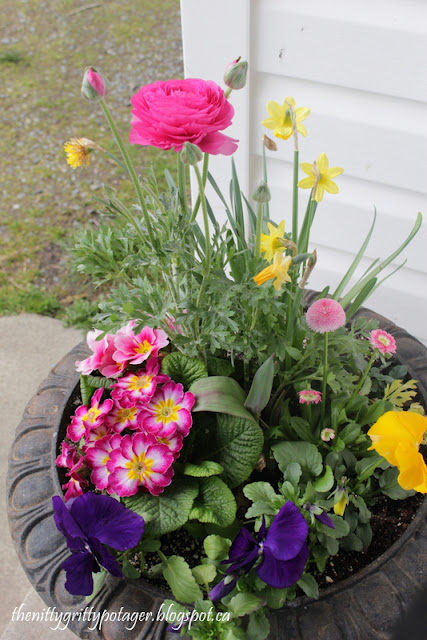March Garden Ramblings
Welcoming the month of March! Bringing us spring flowers, longer days, and (with any luck) warmer, drier weather.
February was a tough month here on the west coast, lots of cold snaps and snow falls... all the way to the very bitter end. Then along comes March... in like a lovely lamb, with sunshine and much needed Vitamin D.
Of course, if you believe the nursery rhymes, in like lamb means we may be having some lion like weather by the end of the month ; )
What are we doing in the yard and garden this month?

Start with garden bed clean up, amending soil, fixing, and prepping for spring/summer planting.
Prune the last of your fruit trees now. Most of us started this task in mid February and then were rudely interrupted by Mother Nature.
When pruning, never remove more than 1/3 of the tree per year, no matter how over-grown or out of hand it may be. Pruning too much at one time will stress out the tree and may cause suckering and water sprouts.
Cut back your roses by 1/3 to 1/2 in height. Remove and dead, broken, or criss-crossing branches now, too. This pruning will help them flush out beautifully this spring.
Spray roses and fruit trees with the horticultural oil and lime sulphur mix if they have not yet started to leaf out.
Rake up the soggy messes last year's perennials left as they died down to the ground, toss into the compost.
Top dress with a couple of inches of manure or compost around your fruiting trees and shrubs, your perennials, ornamental trees, and roses, too. An organic feed that is super easy to do and slowly works itself down to the roost system with the help of the spring rains and earthworms.
Do a soil test and amend your soil accordingly with organic materials.
Top dress your beds. If you did not add organic material to your garden in fall, or if you feel like you need more nitrogen and organics, this is a good time to add it to your beds. Rake out 0.5 to 3 inches of compost or manure over the soil now, no need to feed your plants this summer.
If you are also adding blood meal, bone meal, alfalfa meal, kelp meal, etc...to the beds, mix it in a wheelbarrow or bucket with a bag or two of manure, rake that over your soil.
Do not dig in or you will bring weed seeds to the surface. Just top dress and let the elements and the beneficial organisms in the soil do all the work for you.
When your soil is dry enough to be worked with, start seeding/transplanting cool weather crops. Never muck about in wet soil as that causes compaction.
This month you can plant these hardy cool weather plants ...
- Oriental greens
- All sorts of hardy greens, like mustards, arugula, spinach, radicchio, collards, kale
- Radishes
- Peas, of course!
Direct sow these flowers right into the beds now... sweet peas, larkspur, poppies, calendula, ammi (Bishop's Lace), cosmos, lupins, rudbeckia, amaranths (Love Lies Bleeding), Bells of Ireland., chocolate daisies, sweet alyssum, cosmos.
Plant some lovely asparagus roots. They can be planted as soon as ground can be worked. Do not start from seed, unless you have the patience of a saint. It takes 5 years to go from seed to harvest.
The how-to instructions to grow a great and successful asparagus patch can be found HERE!
Spring is literally just around the corner!
We made it!
We made it!
Happy gardening!










Comments
Post a Comment